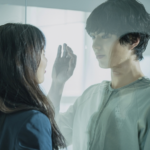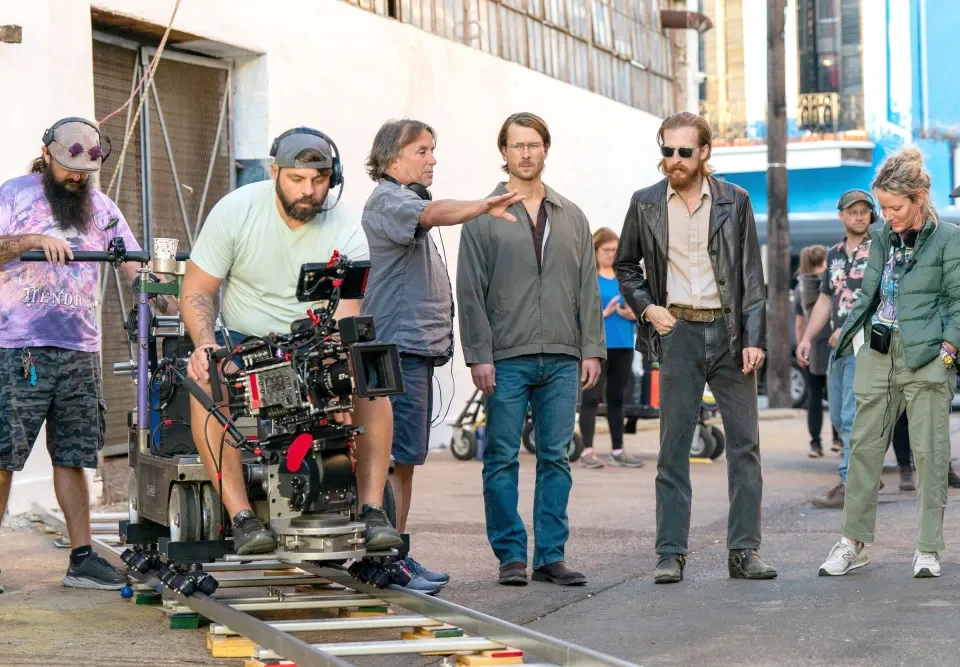
Korea Box Office: AI Fantasy ‘Wonderland’ Takes Weekend Win as ‘Bad Boys: Ride or Die’ Stalls on First Lap
06/10/2024
‘Savages’: How Claude Barras Went From His Oscar-Nominated ‘Zucchini’ to the Jungles of Borneo for Next Stop-Motion Epic
06/11/2024(According To The variety) Nearly a lifetime ago, in 1975, Terry Gilliam submitted his five-minute short film “Miracle of Flight” to the Annecy Animation Festival in France.
An absurdist gem about homo sapiens’ disastrous desire to take to the skies — using the same cut-out technique made famous by the irreverent interstitials and opening credits Gilliam designed for the British sketch comedy series “Monty Python’s Flying Circus” — the film screened, but won no prizes.
Suddenly, half a century later (as “Miracle of Flight” might put it), Annecy corrected the oversight by awarding Gilliam an Honorary Cristal. Turns out, it’s a much nicer trophy — considerably bigger and far easier to dust — awarded in appreciation of lifetime achievement in the field“Can you believe how long it has taken me to get this fucking award?” Gilliam joked in mock outrage. “I think they know I might not be around next year.” But the director of “Time Bandits,” “Brazil” and “Fear and Loathing in Las Vegas” didn’t travel all the way to Annecy just to collect a prize. “I read in Premiere magazine that I’m doing a film with Johnny Depp, Jeff Bridges, Adam Driver and Aquaman [star Jason Momoa], apparently,” he said. Gilliam wouldn’t say more about the project — reportedly called “The Carnival at the End of Days,” in which Depp will play Satan opposite Bridges’ God — except for one incredibly important detail: “I’m trying to do something that is not my style of animation. Some of it’s stop motion, some of it’s going to be digital.”
As Gilliam spoke, a room filled with hundreds of young animation professionals and students suddenly leaned forward in their chairs, as if they were about to be told he’d stashed a golden ticket beneath one of their seats. “That’s the real reason I’m here at the festival. I’m looking for the guy or girl” to collaborate with, he said, “and I thought Annecy’s probably got some of the greatest animators on the planet, so I’m here to meet people.”
Gilliam may accepted a prize for animation, but in the unfiltered masterclass that followed, he was quick to admit that he abandoned the medium in favor of “live action” almost 50 years ago: “I had reached the point where I really was tired of animation, because I really felt there was a lot of things I wanted to do that I couldn’t do in that style.”
Asked to define his animation style, Gilliam instantly quipped, “cheap and nasty.”
He’d seen someone else using cut-outs (manipulating a photo of Richard Nixon, talking with a foot in its mouth) and had found it amusing — not to mention fast, cheap and relatively easy to produce. “It was just a product of … not of any creative decision. It was, ‘What can I do with £400 in two weeks?’ I could start cutting things out, that’s all I could do,” he said.
Early in his career, while living in New York, Gilliam worked for Mad magazine creator Harvey Kurtzman (one of his idols) at his other publication, Help! Kurtzman had introduced Italian-style “fumetti” to America (comic strips made of still photos, with talk bubbles superimposed in each frame), which struck Gilliam as good practice for an aspiring film director. To this day, he still storyboards his projects. And of course, Chris Marker’s “La Jetée” (the inspiration for “12 Monkeys”) used still photos as the basis for a film.
“I decided I wanted to get into moviemaking,” Gilliam explained. “I got a job in a little studio that did stop-motion animation — dancing cigarette packs and things — and the guy said, ‘We can’t pay you.’ I said, ‘I’ll work for free.’ I wanted to be around the equipment. I wanted to see how you did it … and that’s how it all began.”
Gilliam’s breakthrough was actually a short time later, in England, where he’d gotten a job on a television show drawing caricatures of the guests as they came on. “One of the guys in the show had collected several months’ worth of terribly connecting puns … by this very famous disc jockey,” he said. “They didn’t know what to do, and I said, ‘Well, let me make an animated film,’ and they assumed I knew what I was talking about.” Gilliam scrambled to find a solution, and cut-out animation worked best.
“From that I became, quote, ‘a famous animator.’ And then I was introduced to ‘We Have Ways to Make You Laugh,’ a children’s show that Mike Palin, Terry Jones and Eric Idle were doing along with the Bonzo Dog Doo-Dah Band,” he said. “They’d seen the animation I had done and thought this might be good, so I did some stuff on the kids show.”
No recordings of those shows remain, though it brought Gilliam into the fold, and before he knew it, Palin, Jones, Idle and he had joined up with John Cleese and Graham Chapman, and were pitching the BBC on a new show called “Monty Python’s Flying Circus.”
“The BBC had no idea what we were doing … and we got away with it. The idea was, it was six guys who could write, perform and draw,” Gilliam said, “and it was as simple as that. It’s a world that doesn’t exist anymore. Now, you can make your little films, you can put them on the web. Somebody might see them. But there’s a million people out there doing the same thing, so the competition is actually worse now than it was then.”
The way it worked with Monty Python, “John and Graham wrote together, Mike and Terry wrote together, Eric wrote on his own, and I did my stuff on my own, and we would all gather with a lot of this material that we had been working on. It was a very democratic operation about what stays in, what we lose,” explained Gilliam, the lone American in the troupe.
“I was in the most privileged position because basically once we had decided to get rid of all the punch lines, we didn’t have necessarily ends and beginnings to sketches,” he said. “So a sketch would go to that point, and we said, ‘Let’s stop there because that bit isn’t working,’ so it would stop, and they would say, ‘Gilliam takes over from there and gets us to there.’ And that’s how it worked.”
Since Gilliam went off to work on the animation alone, “They didn’t know what I was doing until the day of the show,” he said. “So I had the most freedom of all of the group, and they’ve never forgiven me for that.”
Gilliam also designed the opening credits and animated sequences in the features “Monty Python and the Holy Grail” and “Monty Python’s Life of Brian.” During the masterclass, Gilliam explained the origins of his most famous cut-out — the heavenly foot which squashes everything in the TV series — which was taken from a 16th-century Italian painting by Bronzino called “Venus, Cupid, Folly and Time.”
“It’s a strange painting,” Gilliam said, “and they’ve told me subsequently that it’s probably the most erotic painting in the National Gallery. There’s this big, sexy, beautiful scene, all this activity going on, and there’s Cupid’s foot in the corner. He’s about to step on two doves that are billing and cooing. So this whole painting is about love, but it turns out it’s a very special kind of love. Venereal love, as in venereal disease.”
Gathering steam, Gilliam went on, “It’s actually a painting of syphilis, which was the gift of the Caribbean people. When the Europeans went to the Caribbean after Columbus, they brought typhoid, they bought chickenpox, smallpox and wiped out hundreds of thousands of them. They had a gift for Europe in exchange, and it was syphilis. There was a huge pandemic in Europe for 50 years of people dying of syphilis, and this painting is all about that. It’s a very ironic painting, and it’s really beautiful, and for whatever reason, I thought Cupid’s foot was the best thing in the painting, and I stole it.”
Gilliam produced his most influential animation during his tenure with Monty Python (which continued through stage shows and standalone movies). Asked if he’d ever been tempted to make a feature-length animated film, Gilliam didn’t hesitate to answer: “No, it’s too much work!”
But Monty Python did give him the chance to direct live-action. “Here’s what happened with ‘Holy Grail,’” he explained. “When we wrote the thing, Terry Jones and I had been complaining about all the television shows. We didn’t like the way they were shot, and so we asked the others, ‘Would it be alright if anybody named Terry could write and direct ‘Holy Grail’?’ And the others said, ‘Yeah,’ because it was basically a dogsbody job. It’s hard. Pythons don’t take direction. Pythons know what they’re doing.”
But the two Terrys took responsibility, “and suddenly our names were on the screen, ‘directed by T&T,’ and the show went out and did incredibly well. We were famous film directors just like that. It’s all you’ve got to do, get your name up there, saying ‘directed by’ and you’re halfway there, and people believe, especially Hollywood executives.”
After a career of uphill battles — from the studio forcing him to cut “Brazil” to the bond company threatening to sue over the “completely out of control” production of “The Adventures of Baron Munchausen” — Gilliam doesn’t mince words about agents and industry execs: “They live in a world of complete neurosis. Don’t ever listen to them! All I know is that all the mistakes I’ve made have never been as bad as the mistakes the highly paid executives have made.”
For all the setbacks, Gilliam hasn’t lost his sense of humor, repeatedly cracking himself up throughout the masterclass. “We are probably the most absurd species on the planet. We are ridiculous. We are nonsensical. Our brains are too big for our better senses. I just think that’s what we are, and we’ve got to learn to laugh at ourselves,” he said.
“We’re living in a time where people are less comfortable laughing at people, and I personally think that’s not very healthy. I think laughter is probably the most important thing in your life. It keeps you young. Even doctors have agreed with this,” Gilliam continued, setting up his most surprising joke of the session. “And so I laugh a lot, at least in public. Privately at home, I beat my wife.”




